Searching For Soul Music In The Southern States
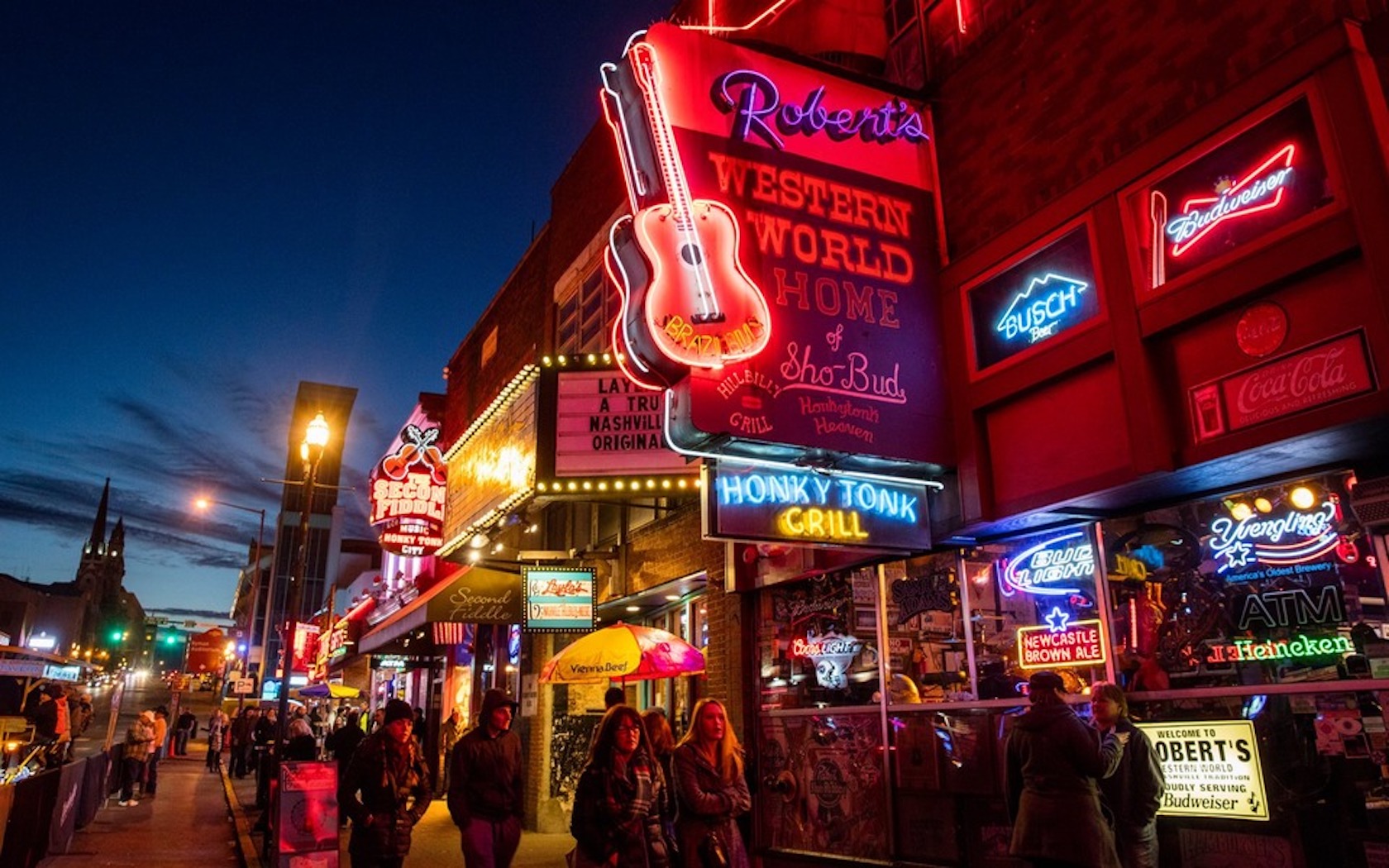
Brand USA works in close partnership with the travel industry to maximize the economic and social benefits of travel. These benefits include fostering understanding between people and cultures and creating jobs essential to the economy.
Travelling is fun, so sometimes Oliver writes about it.
“Blues is what milk does to a baby. Blues is what the spirit is to the minister. We sing the blues because our hearts have been hurt, our souls have been disturbed,” so said the late Memphis-born musician Alberta Hunter. I’m reading about the blues as I tuck into a couple of tacos at a bar in Austin, Texas. I’m about to embark on a musical journey that’ll take me from here towards Memphis, then Nashville. The blues, I’m sure, will feature heavily.
Austin, the live music capital of the world
[media_embed]https://youtu.be/77KqqhRubLE[/media_embed]I’ve been in Austin less than two hours and I’ve already text my girlfriend who’s back in Melbourne suggesting we move here. I just took a walk to find some food; I wasn’t expecting to be confronted with a desire to make an international change of address. I’m not sure if it’s the initial buzz of having just landed, foggy-eyed and wide-minded in a new city half way across the world, or the jetlag, but there’s definitely something going on.
Some hours later, I’m at a restaurant by the name of Ranch 616–something of an Austin institution, I’m told. There’s a blues band playing; the drummer keeping casual rhythm with a cigarette hanging out of his mouth. My travelling party–a bunch of other writers from Australia and New Zealand–and I arrive at the restaurant as strangers. We’ll leave as moderately pissed friends. Tequila has a way of bringing people together

So does food. And as Billy, our charismatic host for the evening, delivers boatloads of local fare (and, uh, some Tasmanian salmon) to our table, I discover shoveling as much butter-soft black angus steak and as many chicken enchiladas in my gob as fast as possible is the ultimate cure for jetlag. I ponder the idea of asking Billy if the chefs can make me a man-sized chicken enchilada–an edible cocoon–so I can crawl inside and eat my way out, but I refrain out of fear he may think me peculiar. Good tequila, then.
Remember the kids who played brass instruments at school? No, me neither. But it turns out they have a spiritual home in Austin, as proven tonight by the sensational Interrobang brass band, who are blowing the non-literal roof off Antone’s Nightclub with their brand of funky brass-blowing.
There’s something real and unfiltered about it — something that gets you right in the gut. “In a brass band, there’s no middleman between the performer and the listener,” Mason, Interrobang’s 25-year-old sousaphone player, explains to me later. “The music goes straight from your lungs to the listeners’ ears, and in that sense, it can be such a raw, dynamic form of communication.”

Of the eight, nerdy-looking guys gusting their lungs into varying degrees of bent metal on stage, 100 per cent of them might have a girlfriend. That’s about 100 per cent more than I could have said for the brass blowers at school. I decide that Interrobang are the definition of The American DreamTM: something (cool) from nothing (uncool), a chicken in the pot, car in the garage, etc. “It’s pretty fair to say that we were considered band nerds at school,” says Mason. “I’ve played tuba since middle school, so I know first-hand how uncool it can be. It helps that we’re playing Outkast instead of ‘Land of 1000 Dances’, too. A friend of mine once explained New Orleans music [where this funk/soul/brass fusion originated] as the ‘most badass that a trombone player can feel’, and I think that applies here.”
Billed as Austin’s ‘Home of the Blues’ and opened by Clifford Antone–a late local music man who mentored the likes of Gary Clark Jr. (who’s now a co-owner of Antone’s) and Stevie Ray Vaughn–on July 15, 1975, the venue has served as a revolving door for the best local and international players ever since. The likes of B.B. King, Buddy Guy, Muddy Waters and John Lee Hooker have all bared their souls to the occupants of this room (well, not this exact room: the club has switched locations several times).
Austin is known as the ‘Live Music Capital of the World’, a moniker it’s cherished officially since 1991, after someone figured out that the city had more live music venues per capita than anywhere else in America. It boasts world-famous venues, some of the largest music events in the known universe (such as the SXSW Conference) and it’s home to the longest-running music TV show in America, Austin City Limits. Then there are the musicians who do or have called the city home over the years: Stevie Ray Vaughn, Willie Nelson, Janis Joplin, The Black Keys, Spoon, Gary Clark Jr., Explosions in the Sky and…Disturbed, to name but a few. Nelly was born here too. Yep, Nelly.
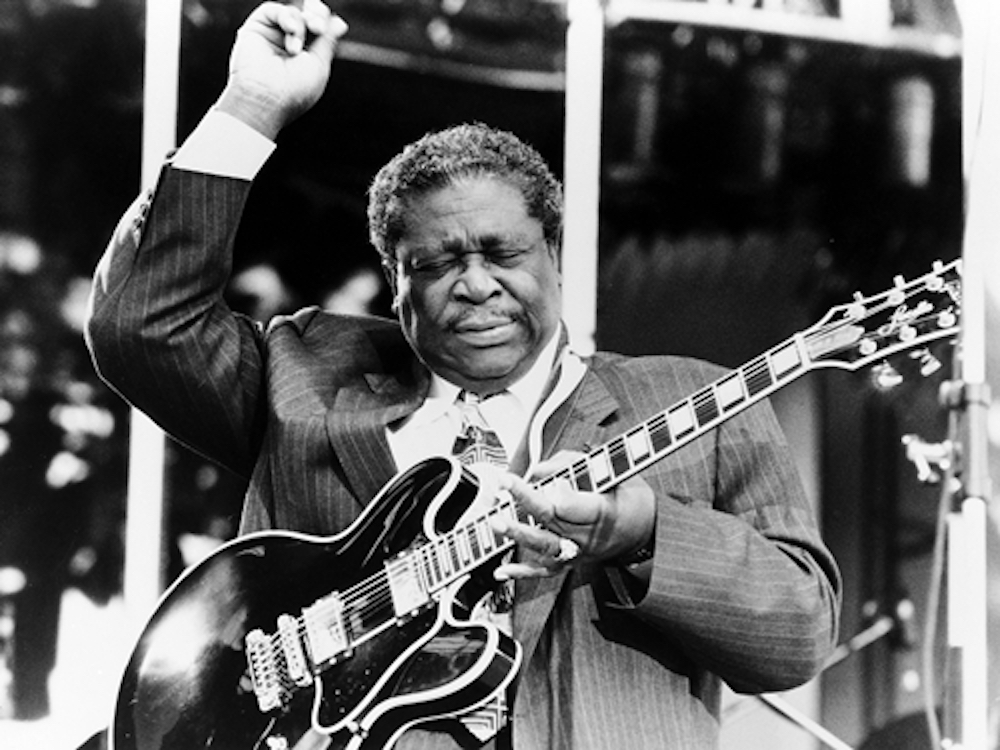
Bar-hopping along Sixth Street, the town’s big, brash, tourist-friendly boozer district illustrates Austin’s most venues per-capita claim in just a couple of blocks. The music floods out of every open window and doorway. Stand in the middle of the road and it sounds like you’re at 20 music festivals at once. If the world ‘spectacle’ applied to sound, it would be quite the spectacle.
The next night, we stop by The Continental Club, the legendary venue opened in 1955, where Janis Joplin was discovered and Robert Plant is a regular. If you want a visual summation of Austin’s music history, look no further than The Continental’s dancefloor. It’s been beautifully battered by delirious dancing for decades, the rubber worn all the way through to the concrete, and is now an underfoot vestige of all that’s happened here. If floors could talk…
Finding otherness in Memphis
[media_embed]https://youtu.be/tyT6zu7Muus[/media_embed]There’s an intimidatingly large crowd–hundreds strong–in the lobby of Memphis’ Peabody Hotel. They, like us, are here to watch the duck march. That is, the march of the ducks. Actual ducks, marched from the water fountain in the middle of the lobby to the elevator and taken up to their room. The march takes place twice a day, every day, and is a boon for tourists. There’s even a roped-off area closer to the action, which I assume is reserved for those who hold season tickets, or something. America can be a strange place for a foreigner.

Ducks aside, no trip to Memphis would be complete without a visit to Graceland and we’re not about to have ourselves an incomplete trip. There are two parts to Graceland: the house in which Elvis lived, and the museum-cum-shopping bit in which they want you to buy stuff. The former is a fascinating glimpse into the strange and enormous life of a man whose fame is difficult for us regular cretins to comprehend. The latter, freshly renovated and opened just the day before we arrive, is huge and relatively bereft of visitors on the day we visit. But in peak season, you can imagine it would resemble a small town dedicated entirely to Elvis.
The house itself is relatively humble. It’s big, but not outrageous. The interior design is the interesting part–from the jungle room (a room made to look something like a jungle, which The King decorated on a whim), to the elaborate multicolored fabric ceiling of the pool room–every nook has a personality of its own. Wandering the halls, I spot The Prophet by Kahlil Gibran in Elvis’ book collection. It gives me more of an idea about Elvis, the man, than anything else I see at Graceland.

We visit the Stax Museum of American Soul Music, which is the original site of the great Stax Records. The label represented the likes of Otis Redding and Booker T. and the MGs before being bowled over in 1989 then rebuilt and reopened in 2003 as a museum. We also visit Sun Studio where, among others, Elvis, B.B. King, Jerry Lee Lewis and Johnny Cash cut their teeth. We take a tour of Sun with Lahna (probably the most engaging tour guide in the history of tour guides), who bequeaths us with knowledge and jokes in equal measure. Standing in that old, dimly-lit studio, I try to imagine modern music without it and the people who worked and recorded here, but it’s impossible. The influence of Sun, of Memphis, is too vast.
Since I first found out I was coming to Memphis, I haven’t been able to get ‘Walking in Memphis’, the song, out of my head. And as I stroll down Beale Street I realise I too am walking with my feet ten feet of Beale. Variously known as the ‘Home of the Blues’, ‘America’s most iconic street’ and ‘Tennessee’s top tourist attraction’, it’s loud, bright and over-the-top; it’s like a miniature theme park showcasing the best bits of Memphis’ history. Yes, it’s full of tourists, but for an Englishman who’s halfway through his first ever time in the US, it’s a shot of vital otherness.
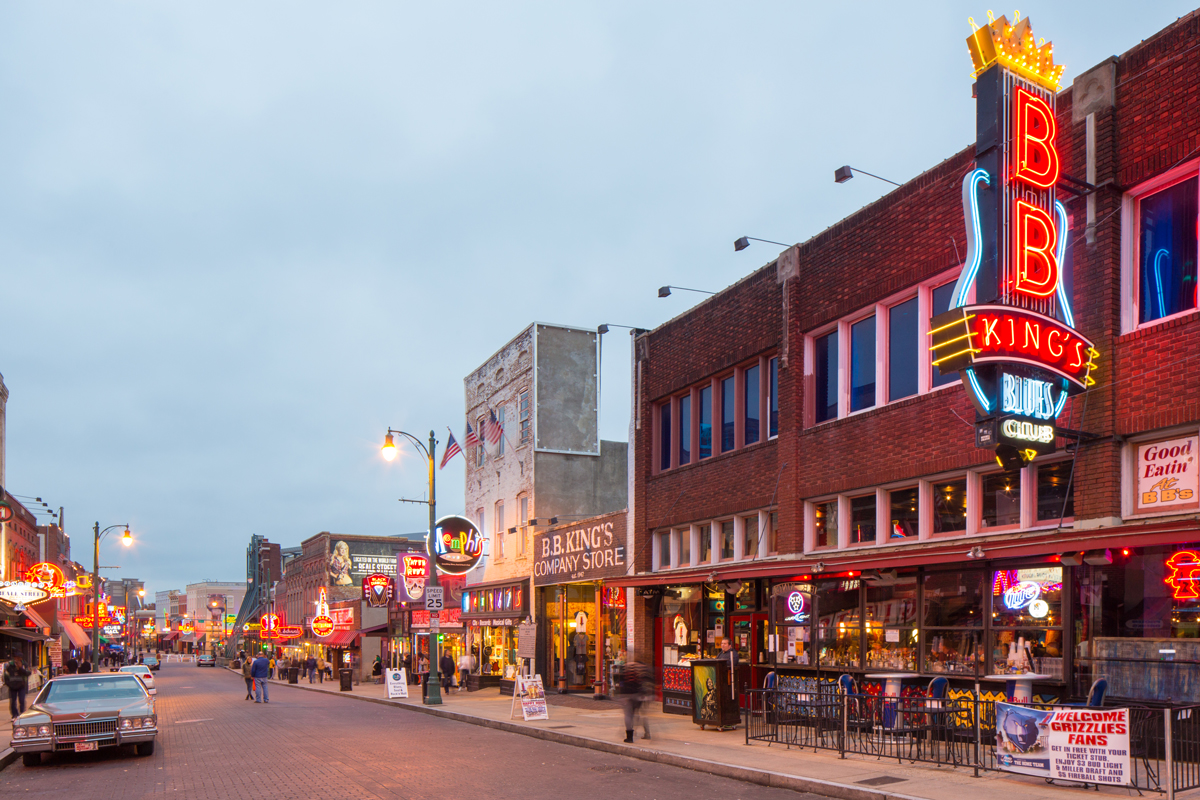
We duck into B.B. King’s Blues Club and watch the house band almost raze the place to the ground, then head across the street to the Blues City Café, where a sensational rockabilly band from Nashville, The Highjivers, are doing some razing of their own. There’s going to be nothing left of this place come morning, I think. But this is what Beale Street has been doing, since the early 1900s, night after night.
The next day, we board a bus for the three-hour drive to Nashville. I can’t stop thinking about Memphis. I have a feeling as though I’ve met someone special and I didn’t get a chance to get to know them better. There’s something about it, a kind of inviting melancholy. They take you to the museums and the clubs and the Beale Streets, but you catch glimpses of the other Memphis. The one where the blues still lives. I make a vow to one day go back and find it under my own steam. I’m not done with Memphis yet.
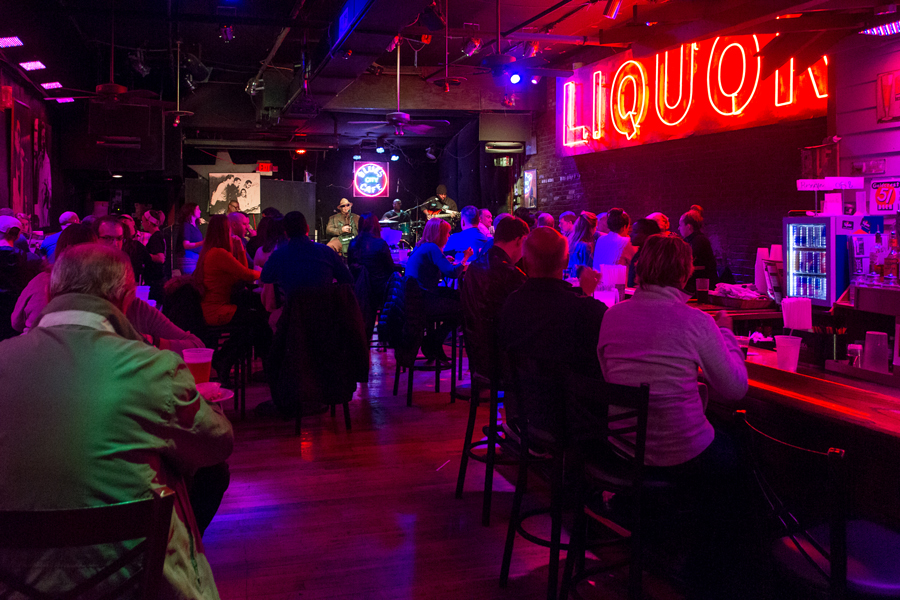
Nashville, Music City
[media_embed]https://youtu.be/xoqaL3WkHi0[/media_embed]Nashville comes at me like a hot flush. This is, in part, due to the fact that while dining at Hattie B’s Hot Chicken, I accidently use a cocktail stick that’s been sitting in the venue’s hottest hot sauce (to demarcate it as the venue’s hottest hot sauce) as a tooth pick. The outcome is me looking as though I’ve had all my wisdom teeth ripped out at once. There’s dribbling, sweating, one side of my face goes numb, I can’t talk, etc. Thank god the fried chicken was the best I’ve ever had.
You should go and see a gig at the legendary Ryman Auditorium. I say this because while I visited the beautiful, historic Nashville venue and enjoyed a backstage tour, I didn’t get to see anyone perform. So I’d like you to go, then send me an email and tell me what is was like. In exchange, I’ll tell you about Robert’s Western World, a Honky Tonk bar famous for being one of the Nashville’s best.
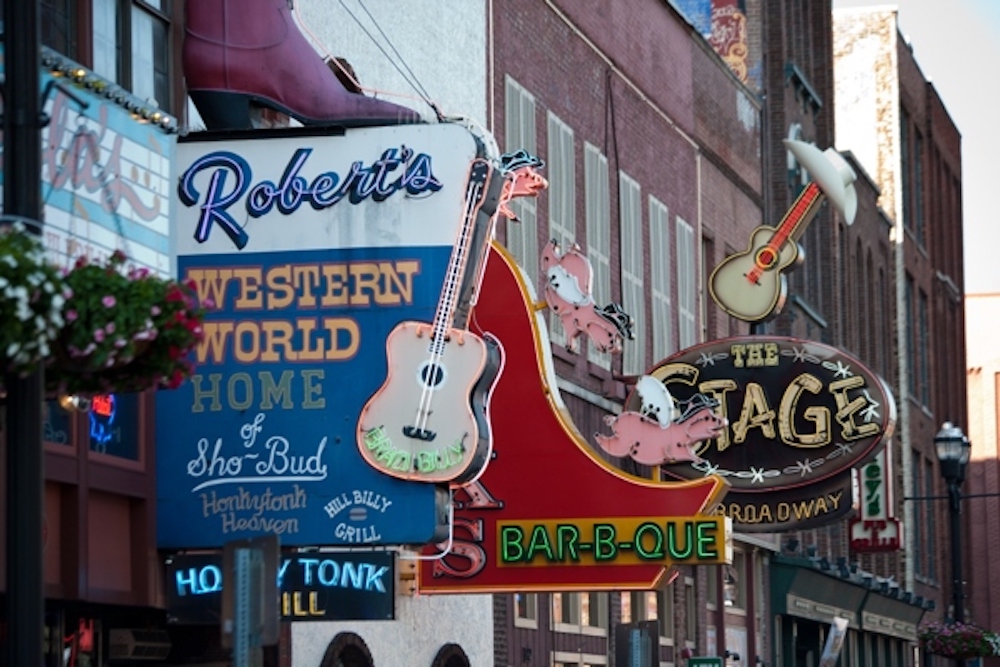
Like most of the other venues I’ve visited during this trip, Robert’s is the ‘home of’ something. Specifically, it’s the ‘Home of Traditional Country Music in Nashville’. There’s a ‘Honky Tonk Grill’ (which I think refers to the grill behind the bar that fills the venue with the sweet, sweet stank of grilled meat, and not a type of cuisine), neon signs aplenty, live bands every night and a relatively severe amount of knee-slappin’ good times. If we’re talking stereotypes, I conclude Robert’s is the most Nashville Nashville gets.
It’s been difficult to escape the hangovers on this trip, primarily because we’ve been watching music and drinking every night, and it’s difficult to do those thing, especially the latter, and avoid hangovers. This is relevant because I’m prone to getting emotional when I’m hungover. I turn into a sort of fragile, man-shaped kitten.
So when we visit The Johnny Cash Museum, a museum dedicated to one of my favourite recording artists, I spend a not-insignificant amount of time holding it together. I manage to get through most of it in one piece but then, right at the end, whilst ‘Hurt’–Cash’s tender Nine Inch Nails cover–plays over the speakers, I read an equally tender note Johnny wrote to June-Carter Cash, his wife, after returning home from her funeral, and all bets are off. I’m done for.

Tonight we’re headed for The Mercy Lounge to watch a band by the name of Lee Fields & The Expressions, who deal in the kind of contemporary soul that Charles Bradley is known for. The room is packed for the support band, the phenomenal Alanna Royale. Led by Alanna, who wields a voice that’s stronger than a hurricane yet silkier than a Chai latte, the band quickly become a new favourite of mine. By the time Lee Fields takes to the stage, the crowd is warmed up, ready to feel something. And Mr. Fields doesn’t disappoint, delivering a quiver of soulful love songs you can hang your feelings on.
From Austin, through Memphis, to Nashville: the blues has, in one way or another, permeated every place I’ve visited, every interaction I’ve had, every band I’ve seen and every piece of music I’ve heard. Its influence is impossible to escape. It was there at Antone’s Nightclub. It was there at Graceland; at the Stax Museum; at Sun Studio. It was at Robert’s Western World and it was sure as shit at The Mercy Lounge. It was even at Hattie B’s Hot Chicken (I could’ve sung the blues after that hot sauce, let me tell you).
All this from a type of music which, in its rawest, pre-American form, can be traced back to West Africa. “It’s just a sound that people can relate to,” Austin John, the 25-year-old guitar player from The Highjivers tells me later. “It’s in almost every kind of music now. Blues is the music that soothes.”
And when you travel around these southern chunks of the US and take in as much music as you can, you just can’t help but feel soothed.
Austin
Listen
#2 Lightnin’ HopkinsThe Black Keys
Stay
Eat
#1 Ranch 616
#2 Tacodeli
#3 Hightower
#4 Via 313
#5Perlas
Memphis
Listen
#1 Otis Redding
#3 B.B. King
Stay
Eat
#2 Bass Pro Shops at the Pyramid
Nashville
Listen
#1 Johnny Cash
Stay
Eat
#1 Josephine
(Lead image: Robert’s Western World)
The writer travelled to Austin, Memphis and Nashville courtesy of Brand USA.
Travelling is fun, so sometimes Oliver writes about it.










